How to strum 16th notes on guitar
Beginner guitar: Take your rhythm guitar skills beyond the basics with this lesson on 16th-note rhythms
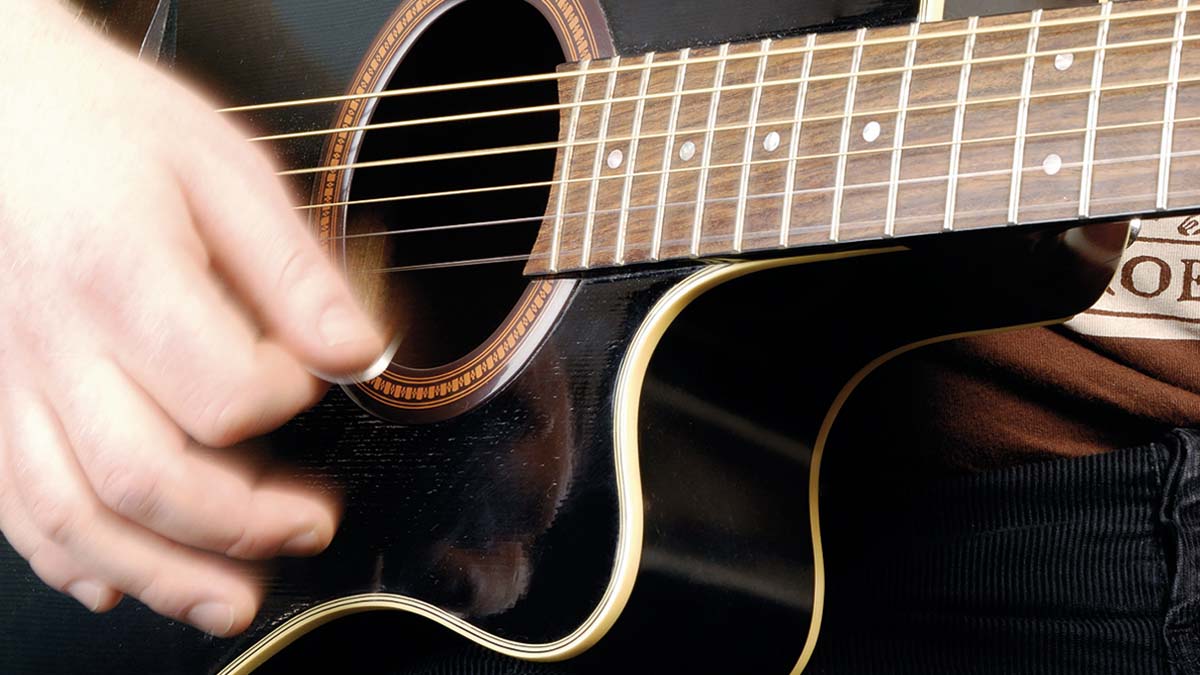
Beginner guitar: If you’re confident at strumming, it’s time to look at rhythm patterns with a slightly more advanced 16th-note approach. That means every quarter-note beat is divided into four, so we can count the bar by saying “1 e & a 2 e & a 3 e & a 4 e & a” (ie, in 4/4 time there are 16 strums in every bar).
Count that out loud as you play, alternating between down- and upstrokes; if a strum falls on an ‘e’ or an ‘a’, it’s an upstroke. Practice until it’s easy and automatic. When that’s working well, aim to keep the same motion going all the time, so that your picking hand acts as a metronome.
You’ll start to feel exactly where in the beat each strum lands. If you’re up for a challenge, listen to our audio examples and play them with and without a swing feel. Famous songs with 16th-note swing (also called a halftime shuffle) include Stevie Wonder’s Sir Duke, Toto’s Rosanna, and Imagine Dragons’ Natural.
Sus chords: Four easy shapes to use for your rhythm workout
You’ll need to keep your focus on strumming and good timing, so these are all easy shapes which shouldn’t test your fretting hand too much. Hopefully you already know D, A, C and G major open chords – these are simple variations on those basics.
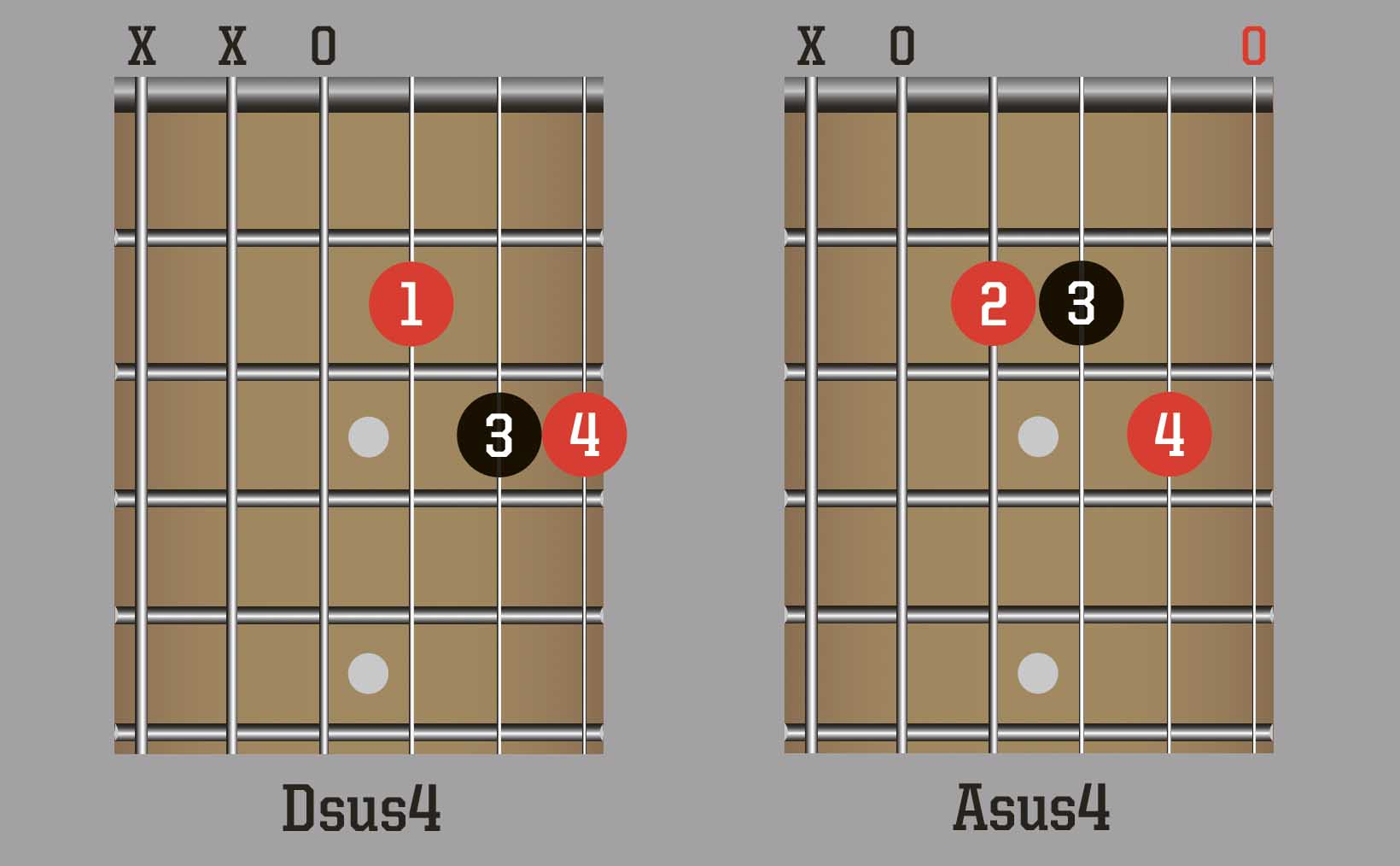
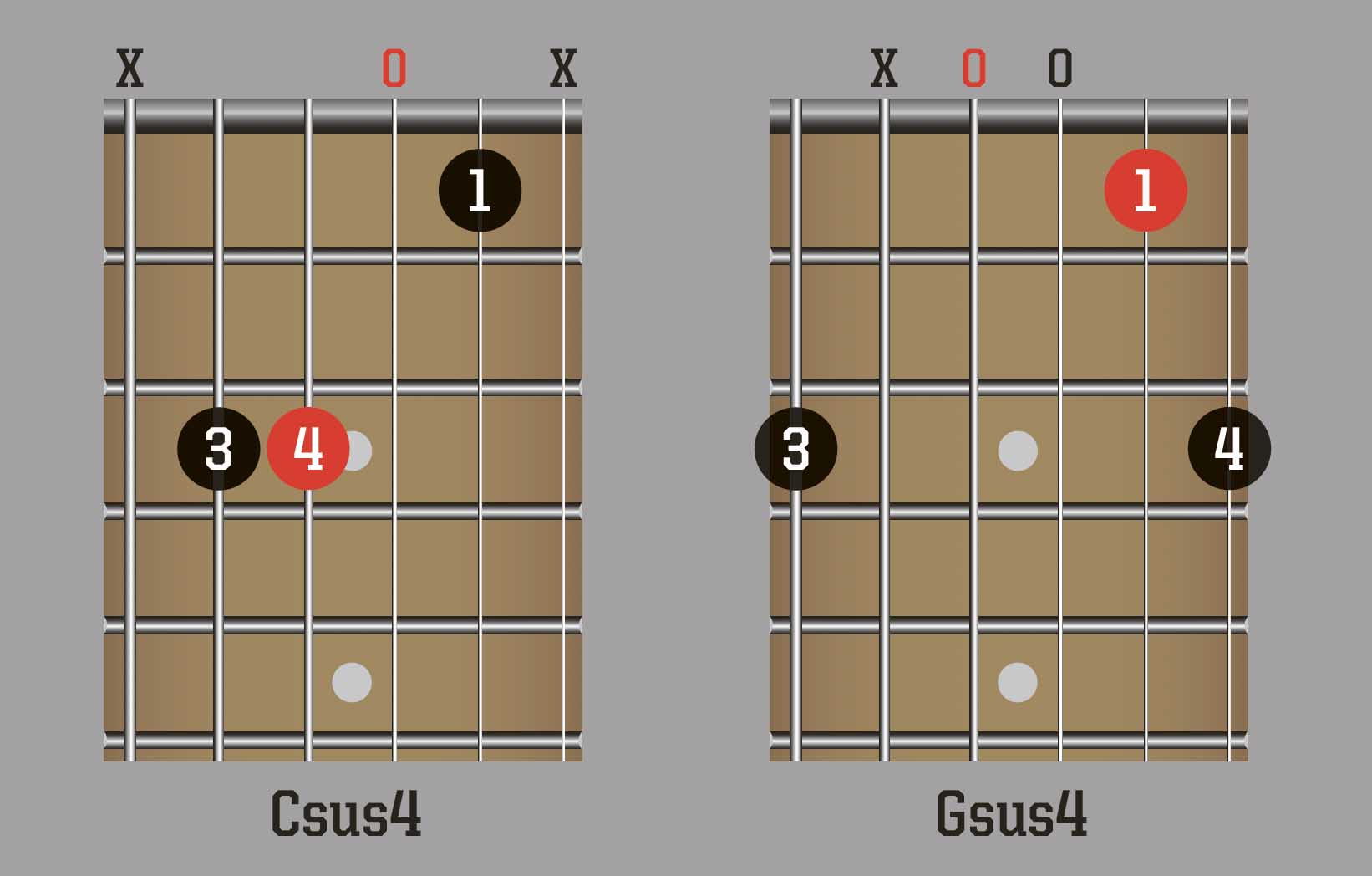
Technique check: Get your fingers in prime position to make those licks easier
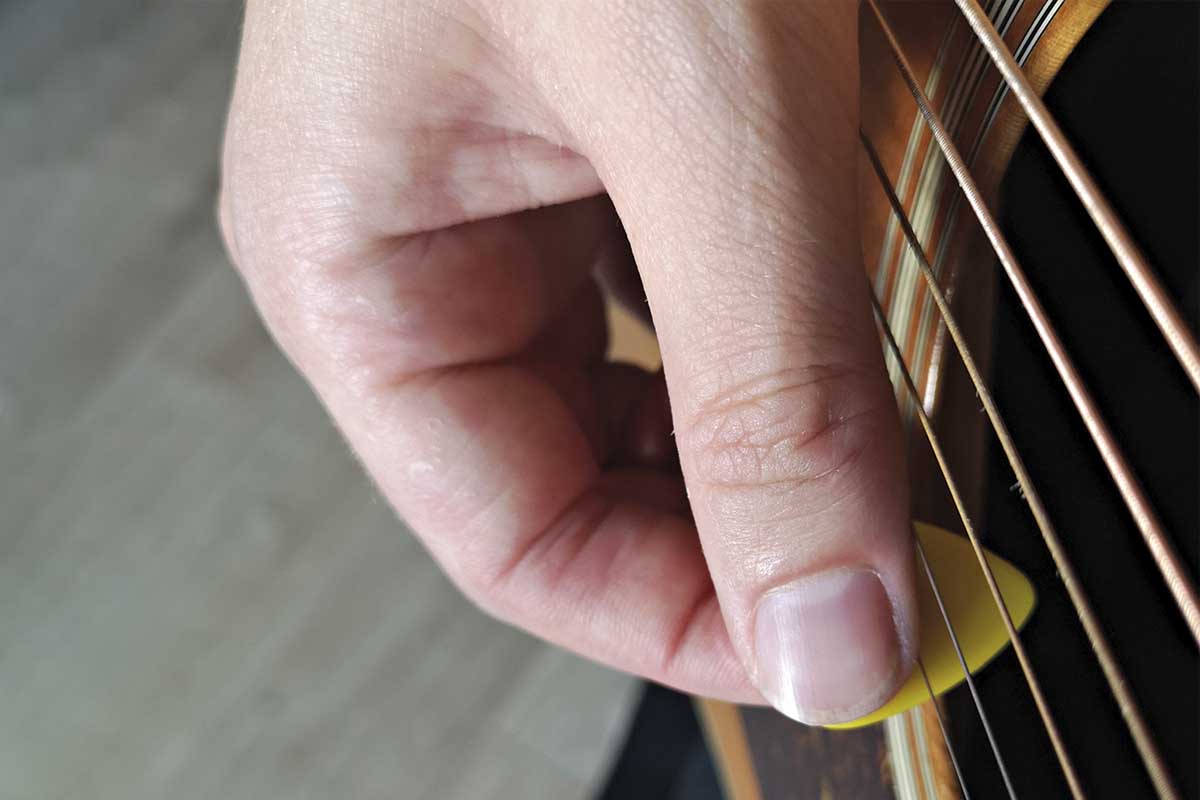
1. Too much pick: If your upstrokes sound choppy or feel awkward, chances are your pick is digging in between the strings, making it hard to strum evenly.
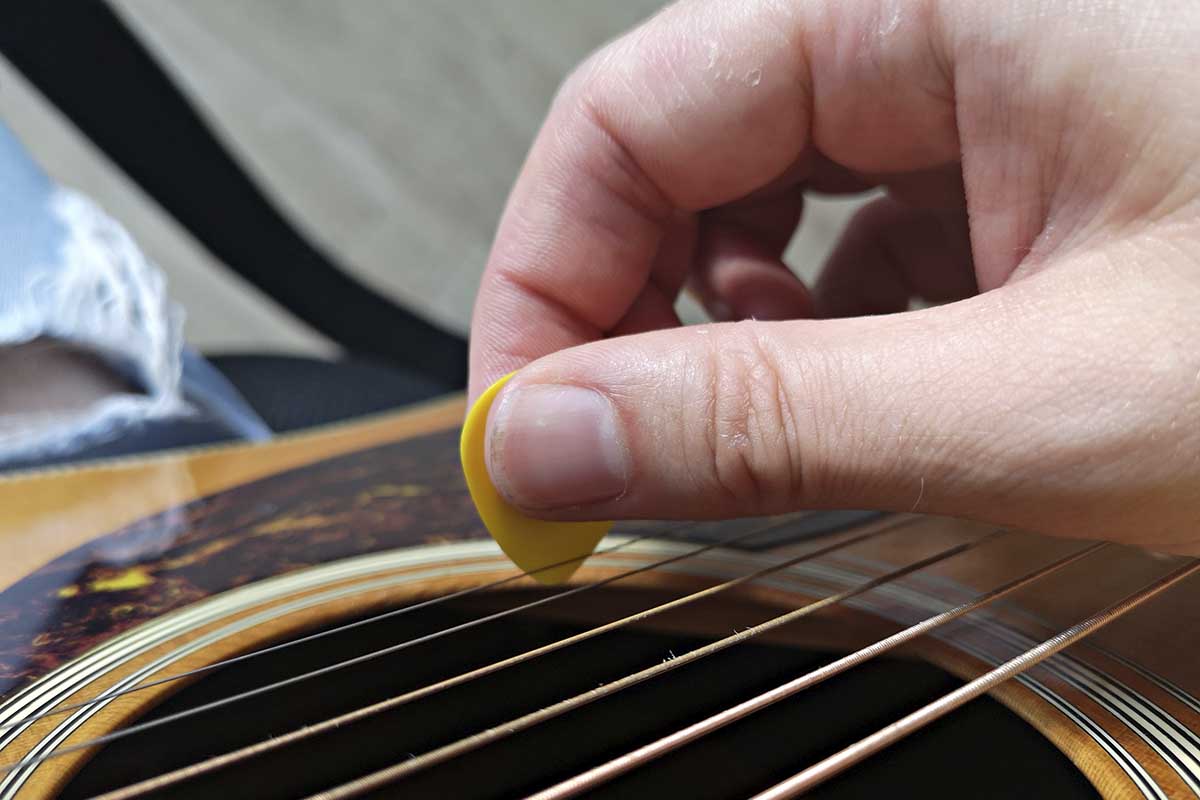
2. Correct pick: Instead, imagine your pick gliding over the surface of the strings rather than going in between them. Strumming should feel smooth and easy.
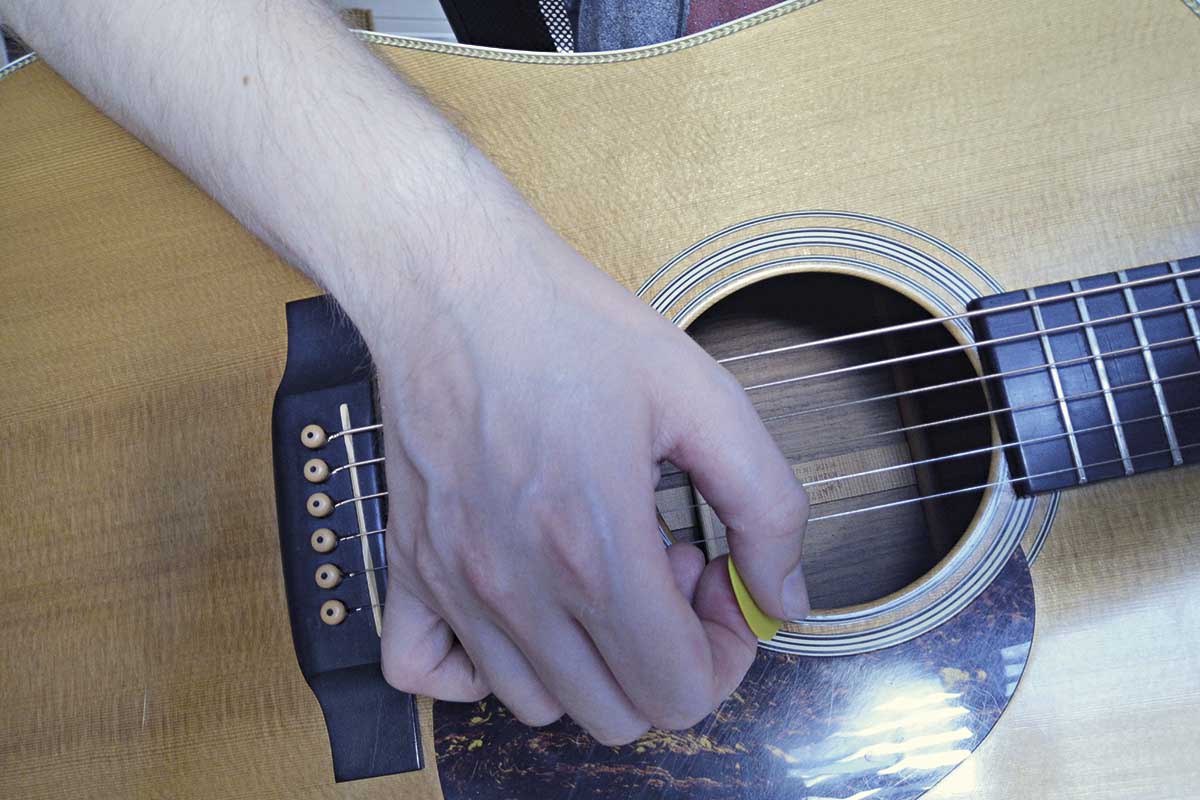
3. Strumming from the wrist: Your strumming movement should come mostly from the wrist, and ideally each down- and upstroke will stay close to the top/bottom of the strings.
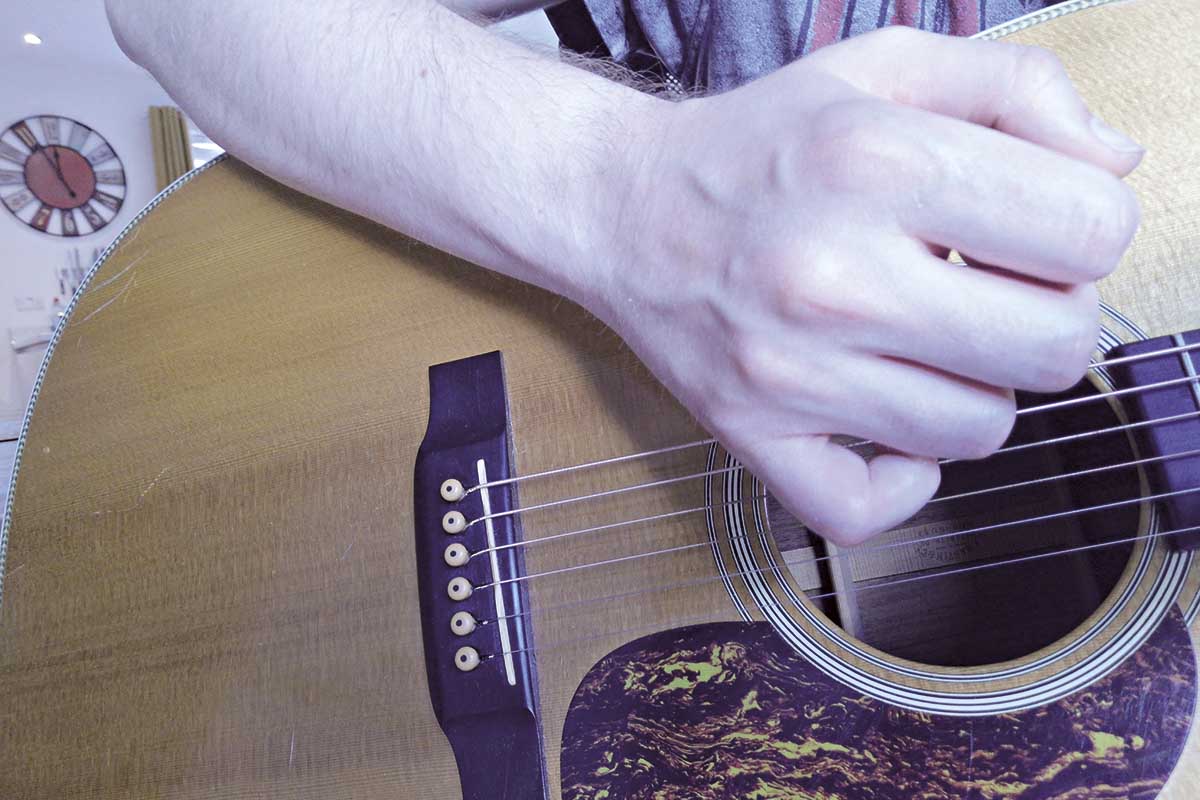
4. Strumming from the elbow: A little bit of elbow movement is fine, but bear in mind that this is a bigger motion that’s likely to throw your timing off. Approach this with care.
Ex 1. Straight 16th notes
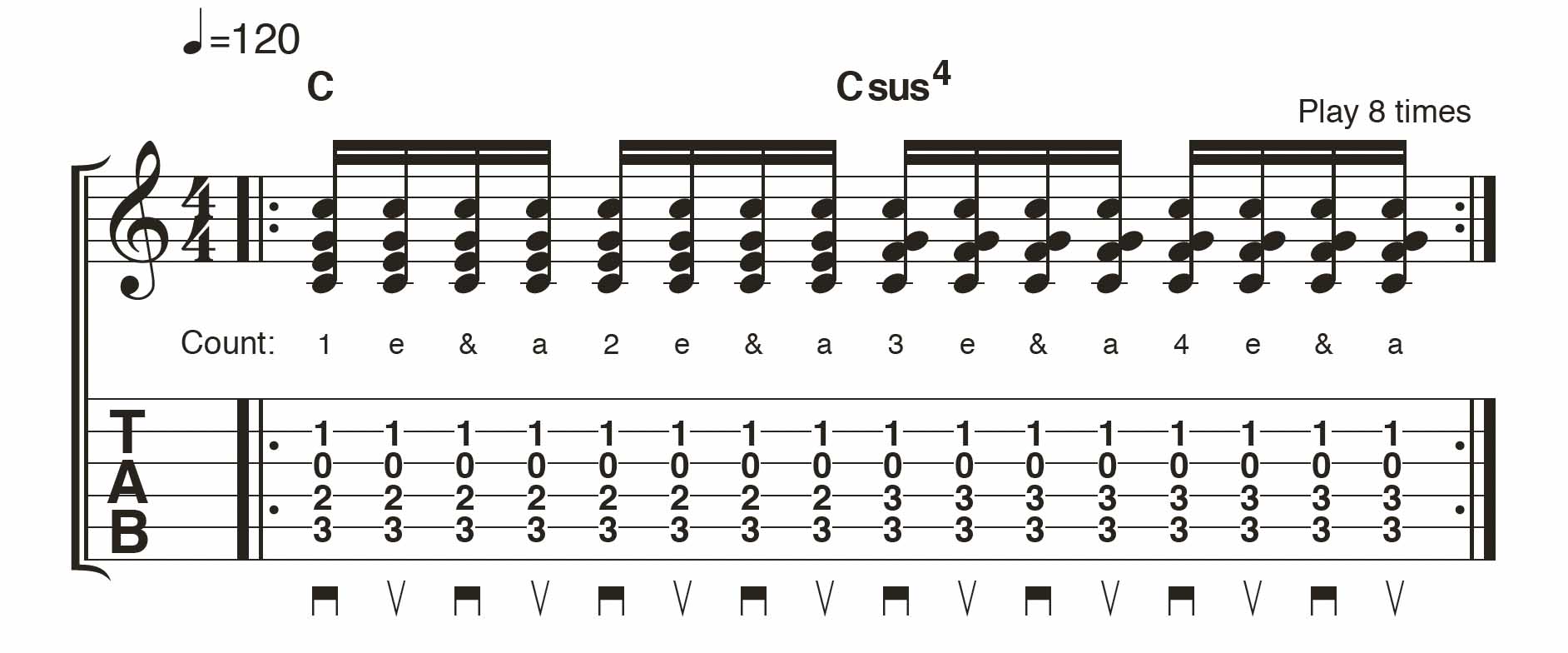
Practice this 16th note strummed pattern with any of the sus4 chords you’ve learned. The rhythm doesn’t change so focus on steady, even timing. If the technique you use sounds good and feels comfortable, it works!
Ex 2. 16ths and Quarter Notes
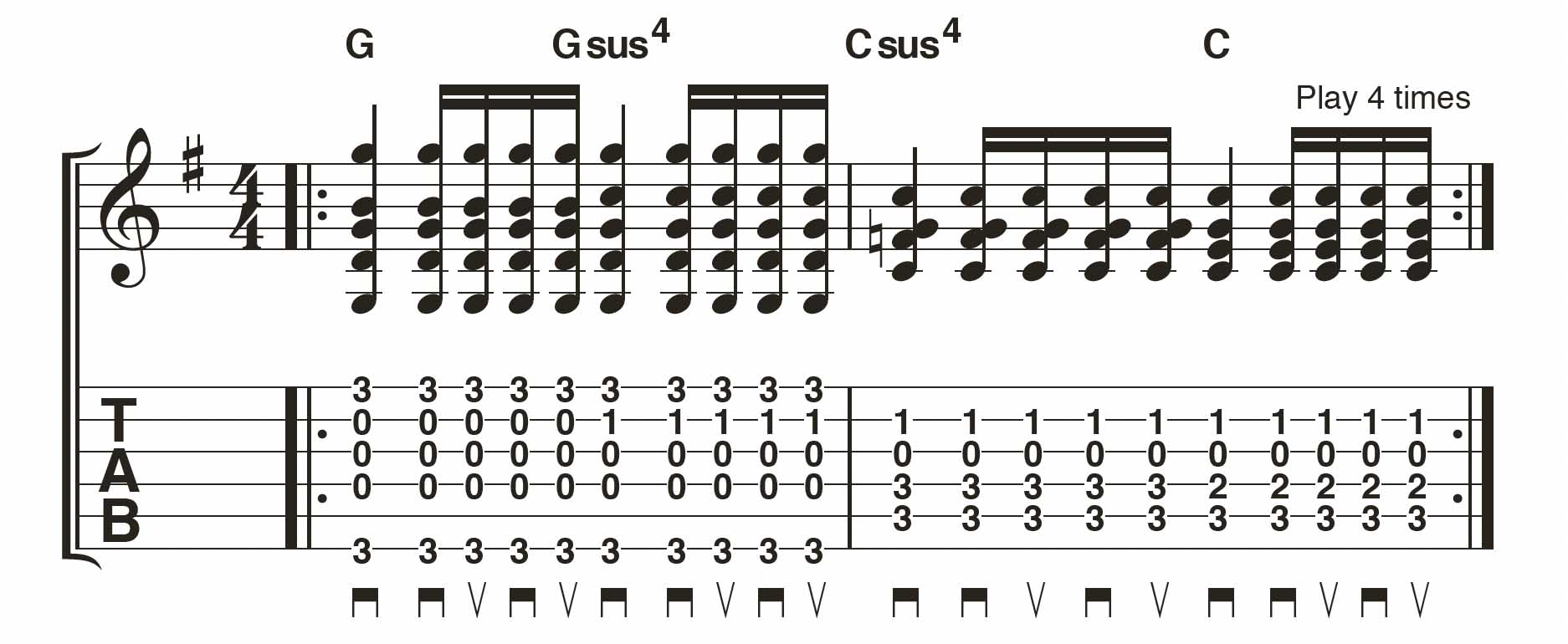
We’re ramping up the rhythmic complexity here, so follow the picking directions exactly, and keep your picking hand moving down and up constantly, even when you’re not striking the strings.
Ex 3. Starting on an Upstroke

This one is more challenging because some of the patterns begin on upstrokes. If you’re moving your picking hand with a straight 16th note rhythm, you’ll automatically be in the right place. It becomes automatic with practice!
Get The Pick Newsletter
All the latest guitar news, interviews, lessons, reviews, deals and more, direct to your inbox!
Total Guitar is one of Europe's biggest guitar magazines. With lessons to suit players of all levels, TG's world-class tuition is friendly, accessible and jargon-free, whether you want to brush up on your technique or improve your music theory knowledge. We also talk to the biggest names in the world of guitar – from interviews with all-time greats like Brian May and Eddie Van Halen to our behind the scenes Rig Tour features, we get you up close with the guitarists that matter to you.










![Joe Bonamassa [left] wears a deep blue suit and polka-dotted shirt and plays his green refin Strat; the late Irish blues legend Rory Gallagher [right] screams and inflicts some punishment on his heavily worn number one Stratocaster.](https://cdn.mos.cms.futurecdn.net/cw28h7UBcTVfTLs7p7eiLe.jpg)
